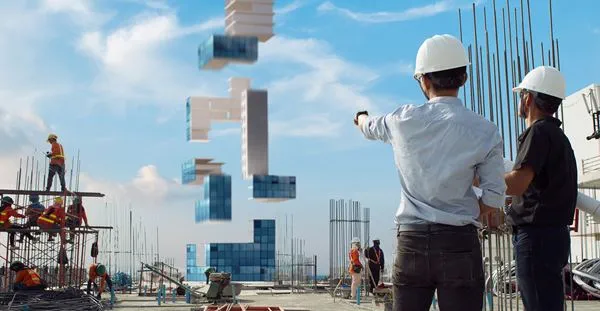Shelter is one of the main components necessary for human life and for communities to prosper. However, over the last few decades, a rapid population increase, a litany of socio-economic issues and staggering climate change is making it impossible for a large portion of the global population to access decent housing. This reinforces the negative feedback loop that haunts the worldwide affordable housing market.
According to a recent United Nations report, the global population will increase from 7.6 billion in 2022 to 8.6 billion by 2030; placing an undue burden on the housing market. As a result, this will increase the population of individuals requiring affordable housing to an estimated 3 billion people. We are already seeing a global rise in informal settlements and slums, which will continue to increase if we cannot provide more housing and develop faster construction methods.
Conventional housing design, current construction methods, and supply chain issues fail to address the global demand for affordable housing. On the one hand, the cost of putting together a house is ever-increasing, and, on the other, the global income index is dropping. This widening gap makes it difficult to rely on conventional construction techniques to address the requirements for affordable housing. We cannot achieve cheaper housing accommodations without significantly compromising the quality of construction, sustainable profits and user satisfaction: aspects necessary to ensure the viability of such efforts.
Need for innovation
The limitations posed by conventional construction techniques have led us to investigate alternative approaches to affordable housing. A promising perspective comes from the automobile industry. Cars were once considered a luxury commodity, but now, despite the supply chain issues, they are available at a reasonable cost. Not only are cars more accessible, but they are also more customizable depending on individual preference or need, from price range to color and other features. The manufacturing line creates a variety of compatible kit-of-parts, configurable, to create a diverse collection of automobiles to suit everyone’s needs.
By successfully replicating the housing market’s manufacturing process, we can reduce both the cost of housing units and the construction time. There are numerous benefits to manufacturing architecture as an alternative to on-site construction. One advantage is the manufacturing work environment is weatherproof and controlled. This environment provides more predictability when it comes to planning a construction schedule and when it comes to the movement and storage of material - which can, very quickly, turn into a logistical nightmare in conventional construction projects.
Computational design and digital architecture
Within each regional housing market, only a handful of core design typologies are resized, tweaked or added upon to accommodate differing unit layouts and allow for personalization.
It is this regional repetition or similarity that can be digitized and process translated. A designer can create numerous frameworks for unit layout logic and a catalog of working design solutions. These frameworks can act as a starting point for users, who can customize their units depending on their preferences and constraints. This way, the digitization of relevant architectural logic occurs, by a tool that simplifies the configuration of a unit and offers users a base model to which they can then add compatible modifications.
The process seems quite challenging from the outside, but game designers have been doing this for a long time. Entire cities can use basic juxtaposition principles to populate buildings, streets, landscaping, street furniture, etc. No doubt, understanding spatial relations within a habitat and programming them might be a little more complicated than in a game environment, but the principles are quite similar. It might be a time-consuming, convoluted task. Still, if we strategize the limitations based on modular construction and assembly rules that govern the modular panels, the problem is simplified.
Using computational tools for design can also significantly improve the overall process. Gamification of such methods can encourage users to configure their units and optimize their energy, environmental conditions, views, cost, construction time, etc. By making digital tools available online and thru apps, commoditization occurs, making accessibility possible even in the most remote parts of the world. A web-based design tool can also take advantage of mobile VR and AR functionality to allow users to accurately render and experience their designs while they customize them further.
The flexibility offered by using granular modularity of construction materials and inconsistent workflows has always been a challenge to transform the design process digitally. Despite our best efforts, it isn’t straightforward to encode the art component of building design programmatically. Most technologically savvy design firms innovate task automation, where human intervention validates the design and computers receive repetitive menial tasks.
However, switching to modular construction can make the procedural generation and automated design much more achievable. Like any customization tools available on most car sale websites, digitized, customizable architectural layouts are possible. The website can offer procedurally generated design options that follow encoded regulations, sustainability practices, and local codes. From here, users can further modify the option to suit their needs. Ambitious users can try designing the units from scratch with the tool being smart enough to offer design assistance and to help avoid obvious blunders. The combination of construction innovation and computational design has the potential to democratize architecture and minimize the cost margin on design services to negligible amounts.
Suppose we manage to navigate the industry towards a more modular market. In that case, we might be able to address numerous global issues that concern human hábitat. Such as in developing countries where informal settlements spawn throughout cities or countries where gentrification is transforming the urban canvas in favor of a select few, or wherever-increasing natural calamities and geopolitical instabilities have pushed a mass chunk of the population towards refuge and homelessness. Modular housing, rapid construction and computational design will allow individuals, communities and governments of the world access to affordable housing: an option that is in desperate need of innovation.





